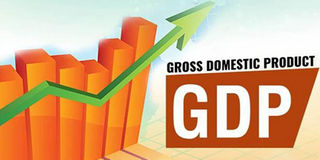Uganda’s economy expands to Shs122.6 trillion

Uganda Bureau of Statistic (UBOS) has rebased the Gross Domestic Product (GDP) using the 2016/17 base year which has revealed that the size of Uganda’s economy is now Shs122.6 trillion, which translated into economic growth of 6.5 per cent for the financial year 2018/19.
What you need to know:
- In 2009/10, UBOS revealed that the size of Uganda’s economy was Shs76.626 trillion based on the new estimate published by UBOS on October 10 instead of Shs40.966 trillion which was published earlier.
Uganda Bureau of Statistic (UBOS) has rebased the Gross Domestic Product (GDP) using the 2016/17 base year which has revealed that the size of Uganda’s economy is now Shs122.6 trillion, which translated into economic growth of 6.5 per cent for the financial year 2018/19.
This is the final GDP growth rate for 2018/19 not 6.1 per cent estimates that was read in June during the national budget of 2019/20.
Rebasing of GDP means replacing the old base period with a more recent base year for computing constant price estimates.
As relative prices and the structure of the economy change over time, it is necessary to update the base year regularly most preferably after every five years but for Uganda’s case UBOS has been using seven years citing challenges in data collection.
Presenting the rebased GDP estimates on Thursday at Statistics House, director macroeconomic statistics Uganda Bureau of Statistics, Ms Aliziki Kaudha Lubega said: “The economy was revised upward by 18.3 per cent from the published estimates of Shs91.718 trillion to Shs108.518 trillion.”
This is the third time UBOS rebased Uganda’s GDP. The second one was done in 2009/10. In 2009/10, UBOS revealed that the size of Uganda’s economy was Shs76.626 trillion based on the new estimate published by UBOS on October 10 instead of Shs40.966 trillion which was published earlier.
Ms Aliziki said the industry sector gained from the shift in the structure of the economy compared to agriculture and services sectors.
“In the period of 2009/10 2016/17, the industry sector gained by 8.1 percentage points compared to a drop of 3.0 and 5.0 percentage points in agriculture and services sectors respectively,” she said.
Ms Aliziki explained that the industry recorded the biggest revision of 51.4 per cent from Shs18.652 trillion to Shs28.248 trillion. While the agriculture and the services sectors followed with revision of 12.9 per cent and 9.2 per cent respectively.
“The GDP per capita was Shs2,940,589 in 2016/17, equivalent to $833. This compares with $704 for 2009/10 base year,” she said.
The minister of Finance, Planning and Economic Development, who launched the rebased GDP, Mr Matia Kasaija said one of the macroeconomic indicator for fiscal and monetary policy and its use is very critical in policy formulation of any country because it guides policy directions.
“When you don’t know where you are going, you get lost,” he said.
Mr Kasaija asked Ministries, Departments and Agencies to use the information in the rebased GDP to plan for their sector activities.



